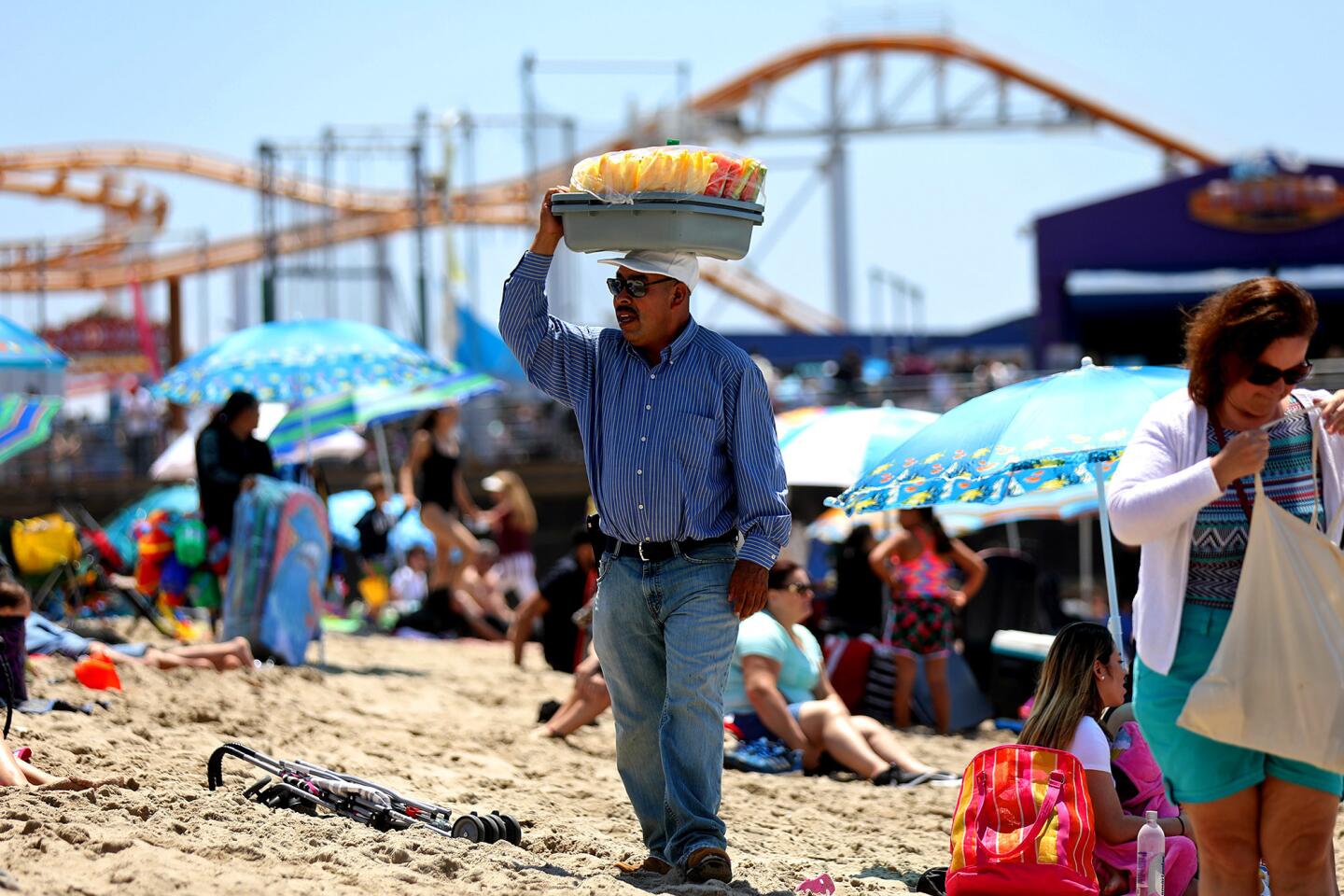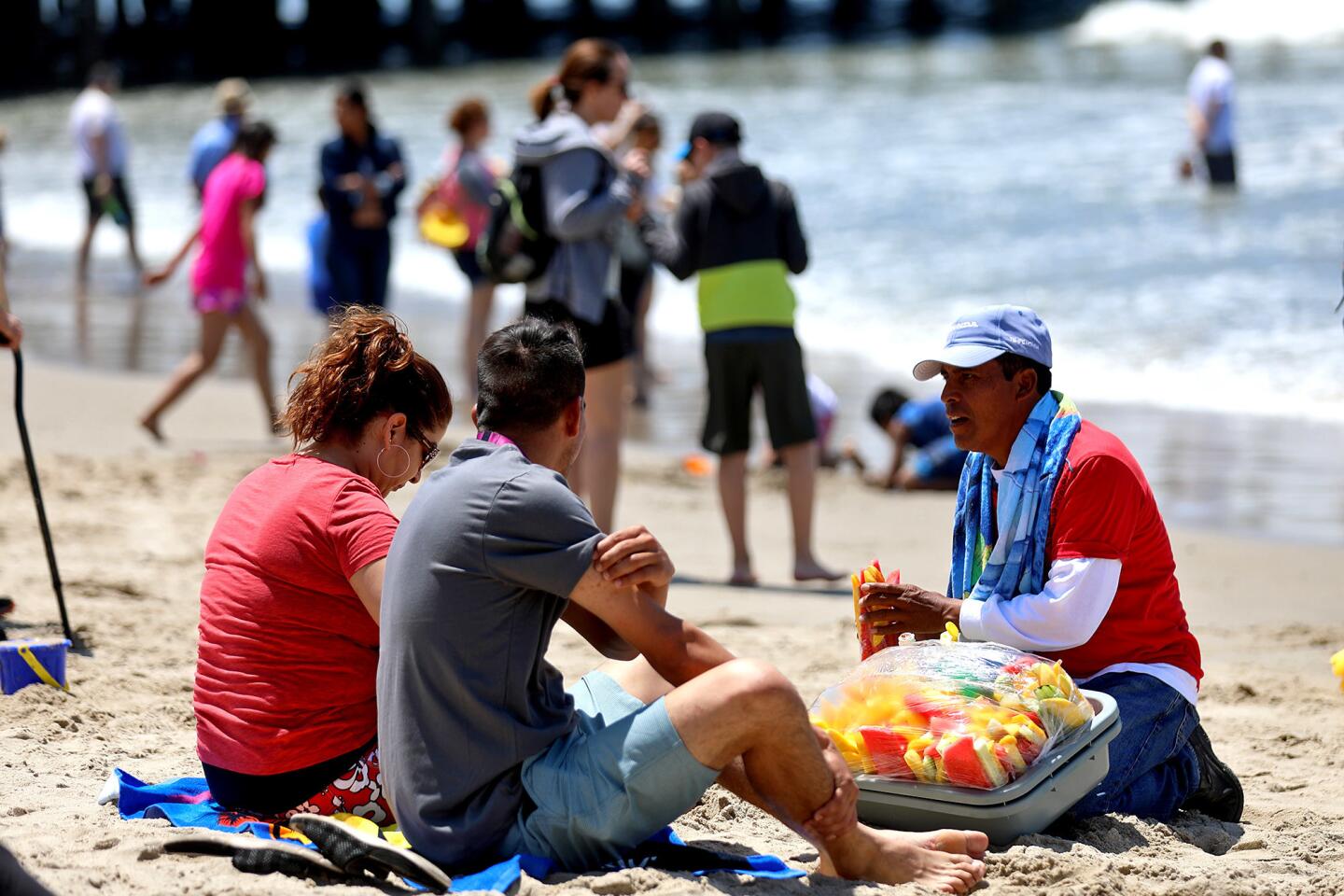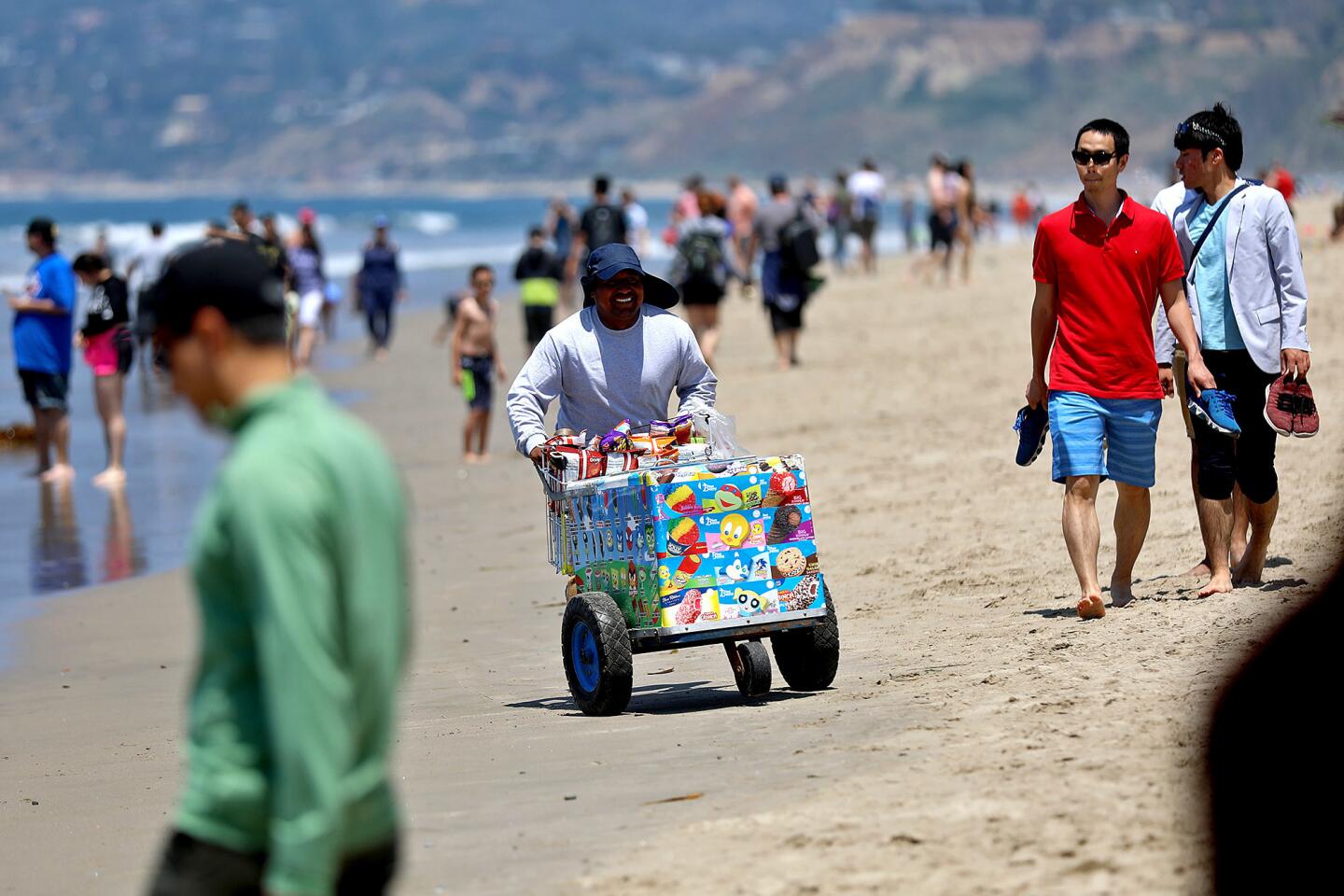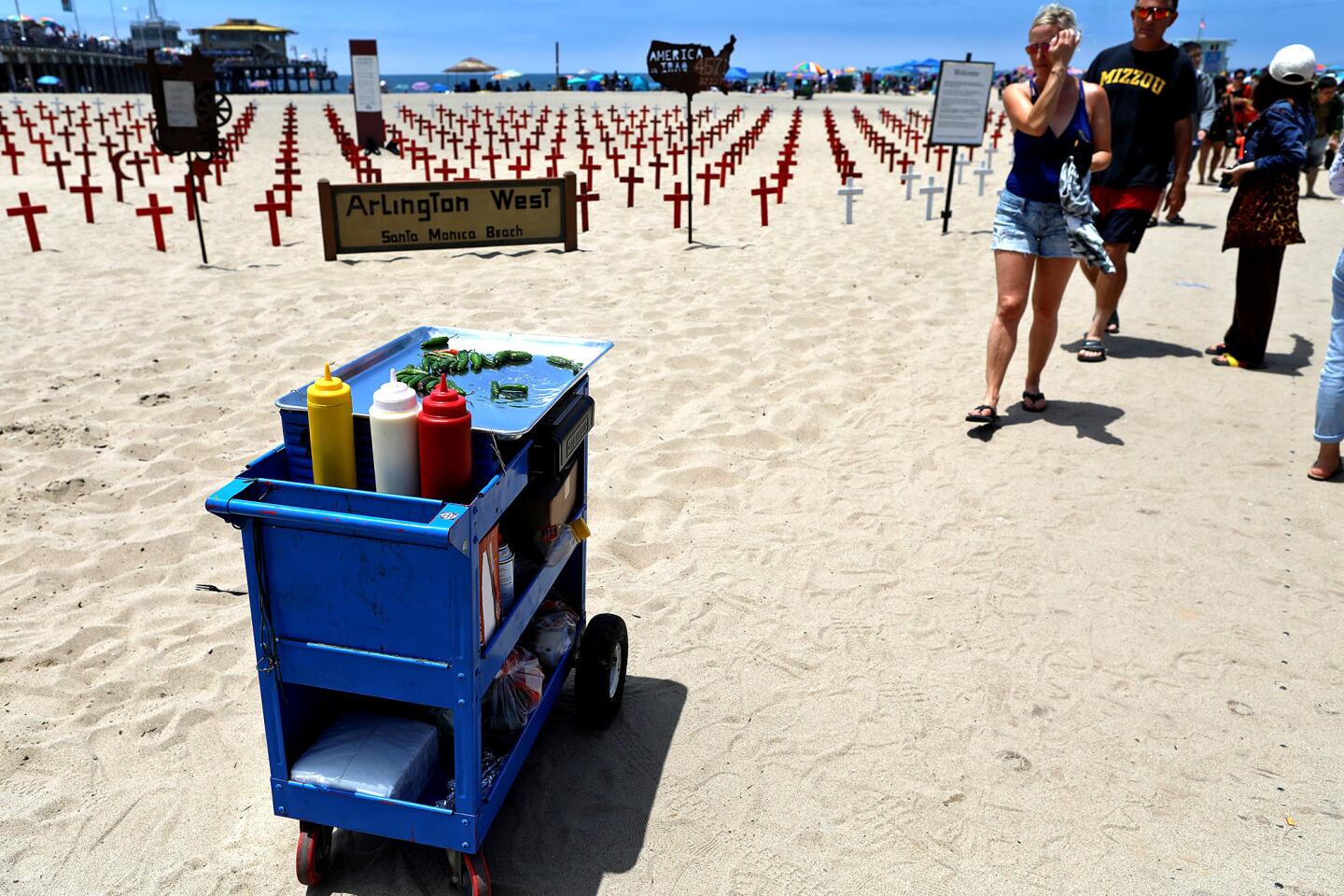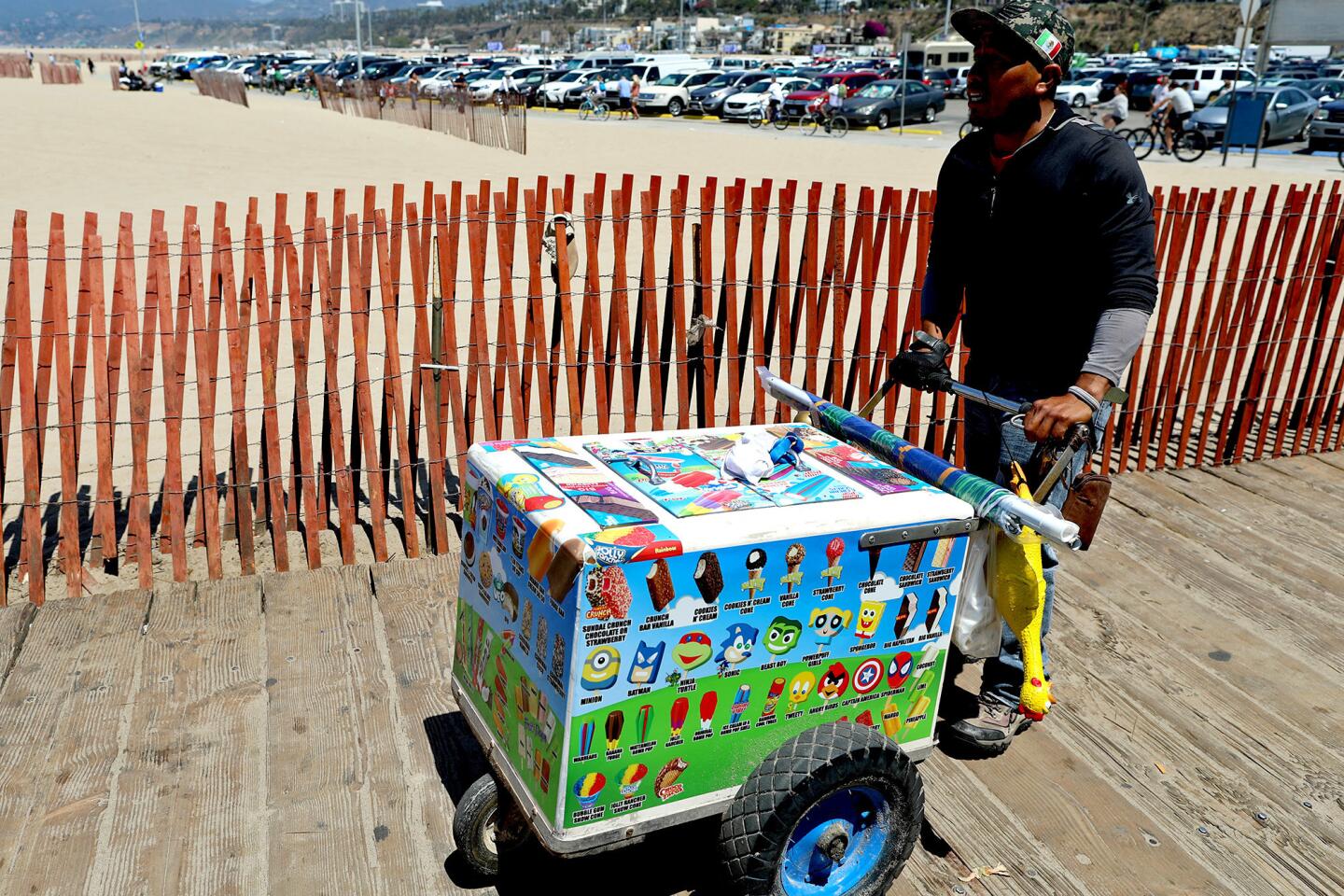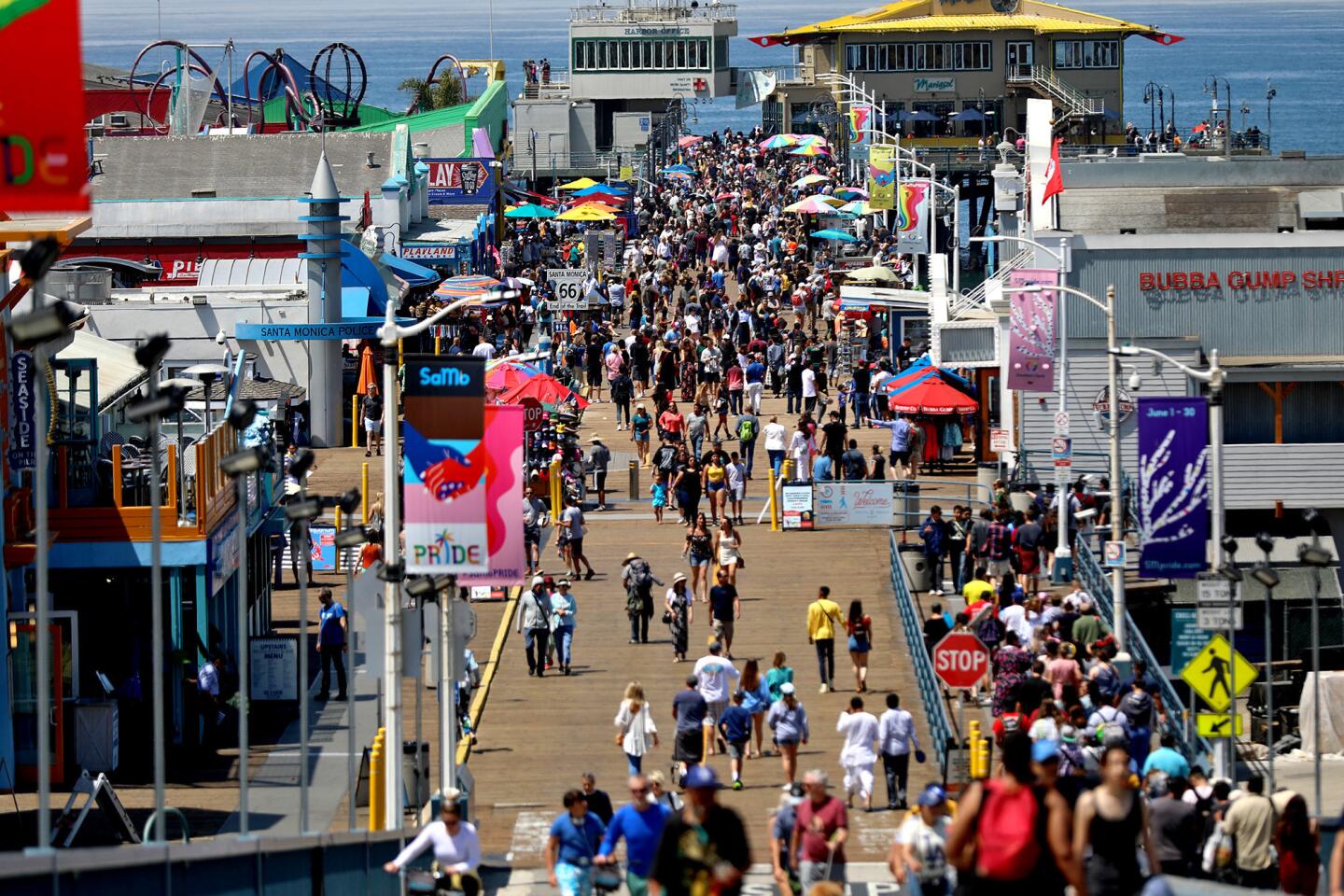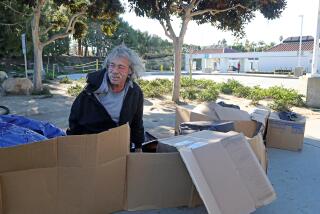Santa Monica street vendors struggle amid new licensing rules
- Share via
Omar Avila is lucky — unlike most of the vendors who sell their wares along the bustling Santa Monica Pier, his pushcart is licensed, plastered with permits, and has an A grade from the Los Angeles County Department of Public Health.
Yet, more than six months after a state law decriminalizing sidewalk vending went into effect, Avila still keeps a sharp eye out. Ever since the city passed an emergency ordinance establishing its Comprehensive Sidewalk Vending Program in April, law enforcement is never far away.
“If I stay talking with you guys, they can give me a ticket,” the ice cream vendor told his unlicensed friends on a recent Sunday afternoon. “I feel punished every time I come here.”
Officials said the emergency ordinance was designed to protect vendors like Avila from legal harassment, and that a licensed vendor would never get a ticket in the circumstances he described.
“In a few short weeks we’ve had 80 applications for vending permits and 60 vending permits approved, which we see as great response,” said Deputy City Manager Anuj Gupta, who heads the vendor program. “Under the state law, any penalties … by definition [have] to be an administrative citation. The state law took misdemeanors completely off the table.”
But Avila and other vendors interviewed along the pier described new and seemingly capricious patterns of enforcement — including misdemeanor arrests and steep fines for previously obscure code infractions — that they say began just days after the ordinance passed on April 9.
“For about the last two or three months, they’ve come after us,” said Urbano Nazario, who has sold churros in Santa Monica for four years. “For a year we were selling well, but the last two months it’s been horrible.”
Cities across California are grappling with how to license and regulate sidewalk vendors since SB 496 took effect on Jan. 1, legalizing a long-illicit practice virtually overnight. Santa Monica is among the first to put forth a comprehensive plan.
“It’s been illegal in most places for so long that no one knows how to do a good program,” said Mark Vallianatos, a policy expert who helped shape vendor rules for Los Angeles. “The spirit of the state law is pretty clear that you want to give vendors the right to operate if they’re doing it in a professional, safe manner.”
Indeed, Santa Monica decided to waive insurance requirements that officials feared could be prohibitive, and made the license fee a modest $160. Gupta called its months-long bilingual outreach program “an unprecedented effort” to bring vendors into the fold.
“We wanted to make it attractive to folks so they could vend legally,” Gupta said.
But alongside those protections have come tight restrictions about where and how vendors can operate, and stiff penalties for those who break the new rules. The emergency ordinance also detailed two new code enforcement officers to the area around the pier, where their main duty is to police sidewalk sales.
“They let you sell [outside the Metro] with permission, but nobody is buying over there,” said Celia Nazario Valle, a churro vendor who was stopped with her husband as they waited to cross Ocean Avenue toward the Santa Monica Pier on April 13, four days after the ordinance was enacted. “I hadn’t even started to sell yet — my cart was full.”
Nevertheless, the pair was arrested and charged with “blocking, impeding, or obstructing an access way on a beach facility” — a misdemeanor violation of the city’s municipal code.
“It appears that the City of Santa Monica may be charging street vendors with misdemeanors for blocking an access way in order to circumvent the new street vending law,” civil rights attorney Cynthia Anderson Barker wrote in a letter to the city attorney on Nazario Valle’s behalf.
Vendors echoed the belief that “blocking” was being used to force them out of Santa Monica now that sidewalk selling was legal. But Gupta said nothing could be further from the truth.
“Nobody wants to be citing vendors for anything if we can help it,” Gupta said. “It’s really about keeping clear our most critical points of access to a very high-traffic, very crowded public space in Santa Monica.”
Officials could not immediately say how many vendors had been charged with the infraction since the emergency ordinance passed — or what criteria were used to determine whether a pathway was blocked — though Gupta said the number was small.
But such arrests have been common enough that vendors working around the pier Sunday afternoon knew by sight which officers were likely to cuff them.
“Look out tio, the sergeant is coming!” 19-year-old Rosa Murcia called down the row, jerking her fruit cart back onto the sand. Other sellers took off running, but the teenager was confident SB 496 would protect her as long as the legs of her cart stayed behind the walkway. If they slipped over, the city could send her to jail again.
“The officers got me from behind,” she said of an arrest earlier this spring. “They said it was because I was blocking [the walkway].”
Cities have both a right and an obligation to regulate vending in the interest of safety and public health, particularly at busy destinations like the Santa Monica Pier, experts said. But misdemeanor arrests may run afoul of the law.
“Cities are welcome to implement regulations to ensure that everyone is complying with the Americans With Disabilities Act,” said Katie McKeon, an attorney at Public Counsel, which helped get SB 946 passed in the fall. “But if someone is taking up more of the sidewalk, that can only be punished through an administrative citation.”
Slapping someone with a criminal charge in such a case would be a clear violation of state law, said Public Counsel attorney Doug Smith.
“It’s upsetting,” Vallianatos said. “Part of the rational for the state law is to decriminalize vending so that immigrant vendors wouldn’t face the prospect of being thrust into the criminal justice system.”
Though he agreed access was important, the policy expert said prohibiting vendors from the most popular swaths of the city and arresting them for obstruction “seems like an unfortunate overreaction” to concerns that might be managed in a less restrictive way.
“The ADA requires four feet for passage, so when we were recommending to the city of L.A., we suggested five feet,” Vallianatos said. “If there have to be special rules in a place that’s very crowded, do them, but don’t jump immediately to banning.”
Vallianatos said legal challenges could start to reshape the rules as more cities follow Santa Monica’s lead. Until then, vendors said they planned to give the new pier detail wide berth.
“If they give me a ticket, I’m finished,” said Avila, the licensed ice cream vendor. “When I see them, I run.”
More to Read
Sign up for Essential California
The most important California stories and recommendations in your inbox every morning.
You may occasionally receive promotional content from the Los Angeles Times.
